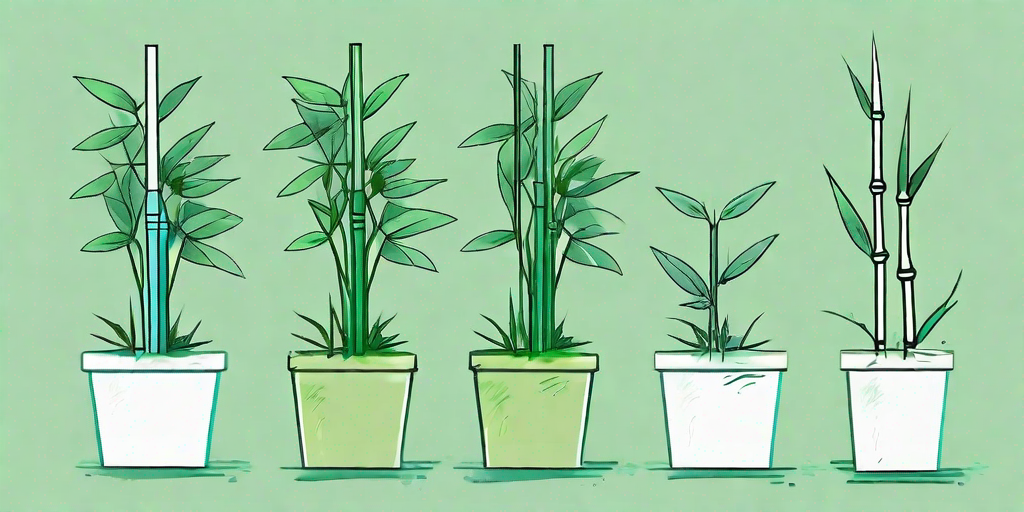
Bamboo, the tall, slender plant that's often associated with pandas and Asian landscapes, is more than just a pretty face in the plant kingdom. It's a fast-growing, versatile, and eco-friendly plant that can transform your garden into an exotic paradise. But how do you go from a tiny sprout to a towering stalk? Well, buckle up, green thumbs, because we're about to embark on a journey of bamboo cultivation!
The Basics of Bamboo
What is Bamboo?
Bamboo is a type of grass. Yes, you read that right. It's not a tree, it's not a shrub, it's a grass! This might be a bit of a shocker, but it's true. Bamboo is the largest member of the grass family, and it's one of the fastest-growing plants in the world.
There are over 1,000 species of bamboo, and they can be found in diverse climates, from cold mountains to hot tropical regions. So, no matter where you live, there's probably a bamboo species that will feel right at home in your garden.
Why Grow Bamboo?
Bamboo isn't just a beautiful plant, it's also incredibly useful. It can provide privacy, reduce noise, and even help control soil erosion. Plus, it's a renewable resource that can be used for everything from building materials to clothing.
But perhaps the best reason to grow bamboo is that it's surprisingly easy to cultivate. With the right care and attention, you can have a bamboo forest in your backyard in no time. And who wouldn't want that?
How to Grow Bamboo Like a Pro
Choosing the Right Bamboo
Not all bamboo is created equal. Some species are better suited for certain climates and soil types than others. So, the first step in growing bamboo is to choose the right species for your garden.
For example, if you live in a colder climate, you might want to choose a hardy species like the Giant Timber Bamboo. If you live in a warmer climate, a species like the Golden Bamboo might be a better fit.
Also, consider whether you want a running or clumping bamboo. Running bamboos spread quickly and can be invasive, while clumping bamboos grow more slowly and stay in one place. Choose wisely!
Planting Your Bamboo
Once you've chosen your bamboo, it's time to get planting. Bamboo can be planted at any time of the year, but spring is usually the best time. This gives the plant plenty of time to establish itself before the winter months.
When planting your bamboo, dig a hole that's twice as wide and deep as the root ball. Place the bamboo in the hole, making sure the top of the root ball is level with the ground. Then, fill in the hole with soil, firming it gently around the base of the plant.
After planting, water your bamboo thoroughly. Bamboo loves water, so make sure to keep the soil moist, especially during the first few weeks after planting.
Caring for Your Bamboo
Watering and Fertilizing
Bamboo is a thirsty plant, especially when it's young. Water your bamboo regularly, making sure the soil stays moist but not waterlogged. During hot, dry periods, you may need to water your bamboo daily.
As for fertilizing, bamboo isn't too picky. A general-purpose garden fertilizer applied once or twice a year should do the trick. Just make sure to follow the package instructions to avoid over-fertilizing.
Pruning and Thinning
Pruning isn't necessary for bamboo, but it can help maintain a certain size or shape. If you decide to prune your bamboo, do so in the late summer or early fall, after the growing season has ended.
Thinning, on the other hand, is a good idea. This involves removing some of the older, larger canes to make room for new growth. Thinning helps keep your bamboo healthy and vibrant, and it's a great way to control the size of your bamboo grove.
Common Bamboo Problems and How to Solve Them
Yellow Leaves
Yellow leaves can be a sign of over-watering or poor drainage. If your bamboo's leaves are turning yellow, check the soil. If it's waterlogged, you may need to improve the drainage or water less frequently.
Spreading Too Quickly
If your bamboo is spreading too quickly, it's probably a running bamboo. These types of bamboo can be invasive and hard to control. To keep your bamboo in check, consider planting it in a container or using a bamboo barrier to prevent it from spreading.
FAQs
Is bamboo easy to grow?
Yes, bamboo is relatively easy to grow. It's a hardy plant that can thrive in a variety of climates and soil types. However, it does require regular watering and occasional fertilizing to stay healthy.
How fast does bamboo grow?
Bamboo is one of the fastest-growing plants in the world. Some species can grow up to 3 feet in a single day! However, the growth rate varies depending on the species and growing conditions.
Can I grow bamboo indoors?
Yes, certain species of bamboo can be grown indoors. These types of bamboo are usually smaller and less invasive than their outdoor counterparts. Just make sure to provide plenty of light and water.
Conclusion
So there you have it, the secret to growing bamboo like a pro. From choosing the right species to watering and fertilizing, growing bamboo is a journey that's full of surprises. But with a little patience and a lot of love, you can turn your garden into a bamboo paradise. So why not give it a try? After all, who doesn't want a little piece of the tropics in their backyard?















